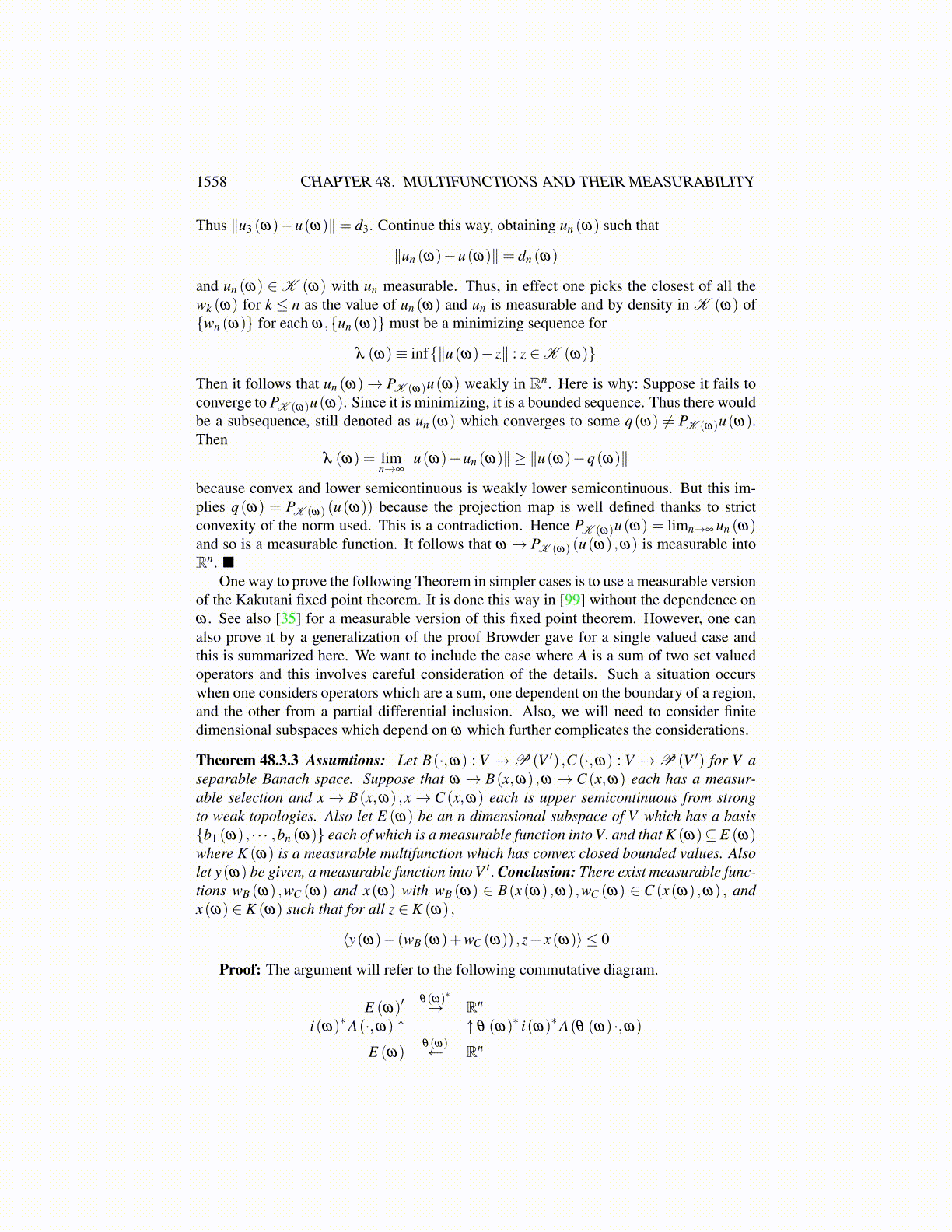
1558 CHAPTER 48. MULTIFUNCTIONS AND THEIR MEASURABILITY
or there is a fixed point for λF for all λ ∈ [0,1] . In the first case, there would be unboundedyλ ,ω solving
yλ ,ω (t) = λ
∫ t
0f(s,yλ ,ω (s)+x0,ω
)ds
Then let xλ ,ω (s) ≡ yλ ,ω (s)+ x0 and you get arbitrarily large∥∥xλ ,ω
∥∥ for various ω andλ ∈ (0,1). The above implies
xλ (t)−x0 = λ
∫ t
0f(s,xλ (s) ,ω)ds
so x′λ= λ f(t,xλ ,ω) ,xλ (0,ω) = x0 (ω) and these would be unbounded for λ ∈ (0,1) con-
trary to the assumption that there exists an estimate for these valid for all λ ∈ (0,1). Hencethe first alternative must hold and hence there is y(ω)∈ X such that ω→ y(ω) measurableand
F (y(ω) ,ω) = y(ω)
Then letting x(s,ω)≡ y(s,ω)+x0 (ω) , it follows that
x(t,ω)−x0 (ω) =∫ t
0f(s,x(s,ω) ,ω)ds
and so x(·,ω) is a solution to the differential equation on [0,T ] which is measurable intoX . In particular, one obtains that (t,ω)→ x(t,ω) is B (0,T )×F measurable where F isthe σ algebra of measurable sets.
48.3 A Set Valued Browder Lemma With MeasurabilityA simple application is a measurable version of the Browder lemma which is also valid forupper semicontinuous set valued maps. In what follows, we do not assume that A(·,ω) isa set valued measurable multifunction, only that it has a measurable selection which is aweaker assumption. First is a general result on upper set valued maps (u,ω)→ A(u,ω)where u→ A(u,ω) is upper semicontinuous and ω→ A(u,ω) has a measurable selection.
Theorem 48.3.1 Let V be a reflexive separable Banach space. Suppose ω → A(u,ω) hasa measurable selection in V ′, for each u∈V and ω ∈Ω the set A(u,ω) is closed and convexin V ′ and u→ A(u,ω) is bounded. Also, suppose u→ A(u,ω) is upper-semicontinuousfrom the strong topology of V to the weak topology of V ′ . That is, if un→ u in V strongly,then if O is a weakly open set containing A(u,ω) , it follows that A(un,ω) ∈ O for all nlarge enough. Conclusion: Then, whenever ω → u(ω) is measurable into V there is ameasurable selection for ω → A(u(ω) ,ω) into V ′.
Proof: Let ω → u(ω) be measurable into V, and let un (ω)→ u(ω) in V where un is asimple function
un (ω) =mn
∑k=1
cnkXEn
k(ω) , the En
k disjoint, Ω = ∪kEnk ,